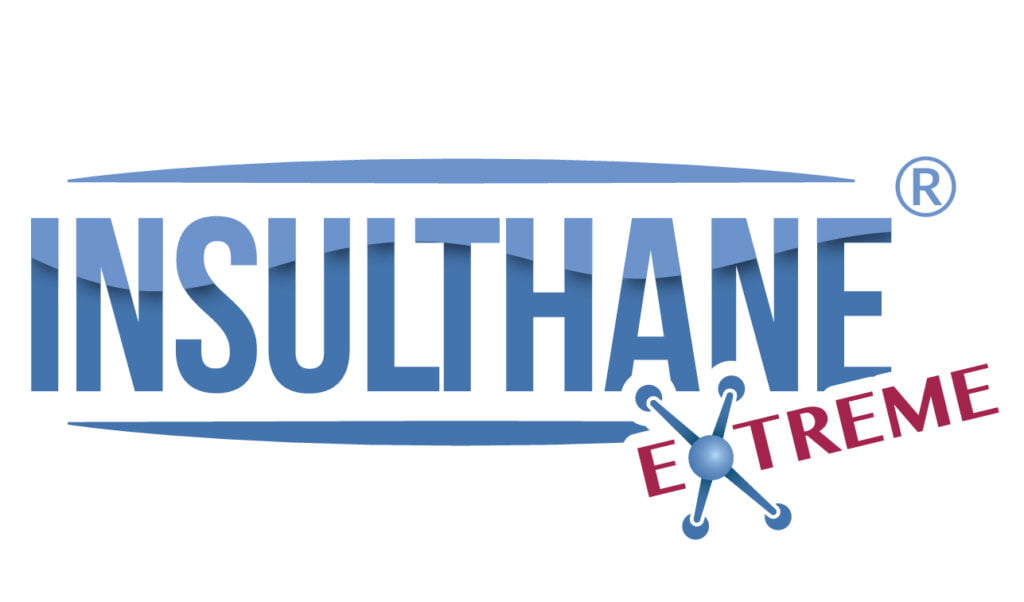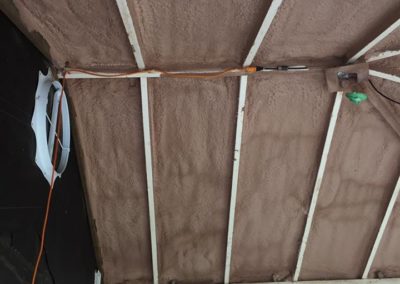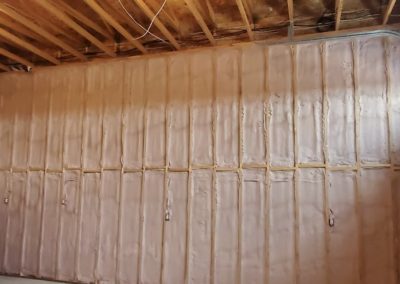2-lb Spray Foam Insulation: High R-Value for Efficiency & Comfort

Introduction: High-Efficiency Insulation with Low Environmental Impact
At Cold Country Spray Foam, we use Insulthane Extreme 2-lb spray foam insulation due to its impressive R-value and low global warming impact. With a R-value of R-6.5 to R-7 per inch (depending on application thickness), 2-lb spray foam provides one of the highest insulation values per inch available today. When applied at a thickness of 2 inches or greater, it acts as a vapor barrier, providing both insulation and moisture protection. Here, we’ll dive into what gives 2-lb spray foam insulation its high R-value and discuss factors that may affect its performance over time.
How 2-lb Spray Foam Insulation Increases Racking Strength
In addition to its insulation properties, 2-lb spray foam insulation can increase a building’s racking strength by up to 300%. This means it helps maintain the structure’s integrity under wind loads and other external pressures, making it an ideal choice for buildings in areas with variable weather conditions.
LTTR (Long-Term Thermal Rating) and Blowing Agents
2-lb spray foam insulation relies on a captive blowing agent within its closed-cell structure to achieve a higher R-value. However, over time, some of this blowing agent escapes, reducing insulation performance slightly as air replaces the escaping gas. This process affects the long-term thermal resistance (LTTR) of spray foam, which is a measurement used to show how insulation performs over time, beyond its initial R-value rating. For more information on R-value metrics and industry standards, see this guide from the Polyiso Insulation Association.
The Impact of Blowing Agents on R-Value
The initial R-value of 2-lb spray foam can be as high as R-6.5 to R-7 per inch, but it will diminish slightly over time as a fraction of the hydrofluoroolefin (HFO) blowing agent escapes. Unlike hydrofluorocarbons (HFCs), which were commonly used in spray foam insulation, HFOs have a significantly lower environmental impact. Since January 1, 2021, Canada has banned the use, importation, and manufacture of HFC blowing agents, further ensuring that modern spray foam products meet higher environmental standards.
Understanding LTTR for Accurate Insulation Performance
The Long-Term Thermal Rating (LTTR) is an important measure for evaluating insulation’s effectiveness over time, as opposed to the immediate R-value observed right after installation. Knowing the LTTR gives a more accurate picture of the insulation’s long-term value, helping homeowners and builders make informed decisions about their insulation needs. We recommend always asking for the LTTR to understand how spray foam insulation will perform in the long run, whether it’s for a home or commercial building.
2-lb Spray Foam R-Value: What You Need to Know
Despite initial claims by some contractors, all medium-density spray foams (such as 2-lb closed-cell spray foam) typically result in an R-value of no higher than R-6 per inch over the long term. Therefore, when comparing insulation options, it’s essential to understand that no spray foam material will offer an R-value consistently above R-6 per inch once the blowing agent has partially dissipated. This information helps clients avoid misleading claims and choose an insulation product that truly meets their needs.
Why Choose Cold Country Spray Foam?
As a small, Canadian, family-run business, we take pride in providing expert consultation, sales, and installation of polyurethane spray foam insulation across Manitoba and Northwestern Ontario. Our team of insulation specialists is here to guide you through every step of the process, ensuring you get the highest quality insulation solution for your home or building. Learn more about spray foam insulation.
Contact Cold Country Spray Foam Today
If you’re ready to improve your building’s insulation, get in touch with Cold Country Spray Foam. We offer free estimates for spray foam insulation, blown-in cellulose attic insulation, and insulation removal services. Fill out our online estimate request form to start your journey toward a more comfortable, energy-efficient home today!
FAQs about 2-lb Spray Foam R-Value
- What is the R-value of 2-lb closed-cell spray foam insulation?
- How does the R-value of 2-lb spray foam compare to other insulation types?
- What is LTTR (Long-Term Thermal Resistance) in spray foam insulation, and why is it important?
- Why does the R-value of spray foam insulation diminish over time?
- Is 2-lb closed-cell spray foam insulation environmentally friendly?
- Can 2-lb spray foam insulation be used as a vapor barrier?
- What are the recommended R-values for different areas of my home in Manitoba to meet insulation standards?
What is the R-value of 2-lb closed-cell spray foam insulation?
The R-value of 2-lb closed-cell spray foam insulation typically ranges from R-6 to R-7 per inch. This high R-value makes it an efficient choice for insulating areas where maximizing energy efficiency is a priority.
How does the R-value of 2-lb spray foam compare to other insulation types?
Compared to other types of insulation, 2-lb spray foam offers one of the highest R-values per inch, outperforming materials like fiberglass (R-3 to R-4 per inch) and cellulose (around R-3.5 per inch). This makes spray foam a more space-efficient choice for achieving high insulation performance.
What is LTTR (Long-Term Thermal Resistance) in spray foam insulation, and why is it important?
LTTR (Long-Term Thermal Resistance) measures how insulation performs over time, rather than immediately after installation. This is essential for spray foam, as the R-value may decrease slightly as the blowing agent escapes. Knowing the LTTR helps you understand the long-term effectiveness of your insulation.
Why does the R-value of spray foam insulation diminish over time?
The R-value of spray foam insulation may decrease as a fraction of the blowing agent within its closed cells escapes and is replaced by air. This process is natural and gradual, impacting the insulation’s R-value over the long term. Modern spray foams now use HFO blowing agents instead of HFCs, which are better for the environment.
Is 2-lb closed-cell spray foam insulation environmentally friendly?
Yes, modern 2-lb closed-cell spray foam insulation uses hydrofluoroolefin (HFO) blowing agents, which have a significantly lower global warming impact than the previously used HFCs. This makes it a more environmentally friendly insulation option.
Can 2-lb spray foam insulation be used as a vapor barrier?
Yes, when applied at a thickness of 2 inches or more, 2-lb closed-cell spray foam serves as both an insulator and a vapor barrier. This dual functionality meets insulation and moisture protection requirements in areas like basements, helping to qualify for certain rebates.
What are the recommended R-values for different areas of my home in Manitoba to meet insulation standards?
Efficiency Manitoba provides specific recommended R-values for different areas to qualify for energy rebates and ensure optimal insulation performance:
- Attics: R-50 or higher
- Basement Walls: Minimum of R-24
- Exterior Above-Grade Walls: Minimum of R-20
- Floors over Unheated Spaces: R-28
- Crawl Space Walls: Minimum of R-24
2-lb closed-cell spray foam can help you reach these R-values efficiently, especially in attics, walls, and crawl spaces, due to its high R-value per inch.



